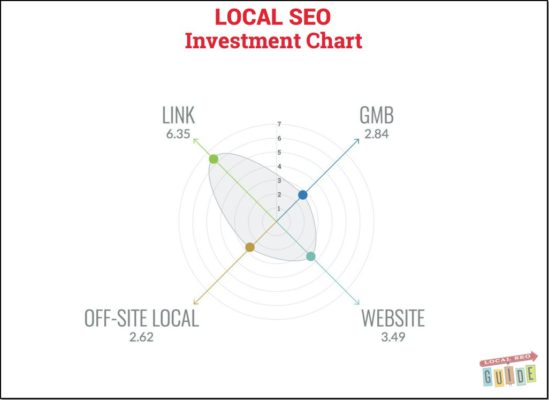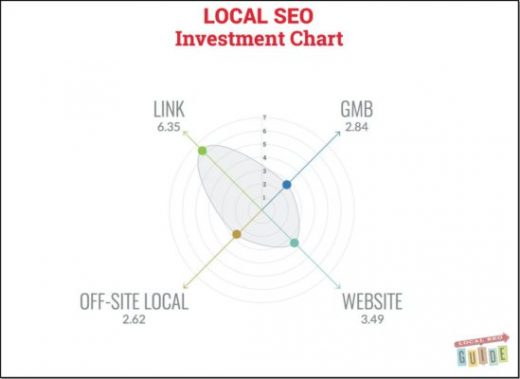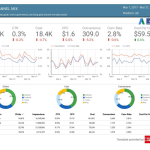How does Google’s local algorithm work in 2016?
Columnist Andrew Shotland shares insights gleaned from a large-scale statistical analysis of local search ranking factors in Google.

Last month at SMX Advanced, Dan Leibson and I unveiled the results of what we believe to be the largest ever statistical study of Google’s Local SEO ranking factors. We looked at over 100 factors across 30,000 businesses to try to figure out how local businesses can rank better in Google, and the results were both surprising and perhaps not so surprising.
For years we have participated in David Mihm’s/Moz’s ranking factors survey, which has been great for getting a feel for what practitioners were seeing/feeling. But we felt that a statistical analysis of ranking local businesses could be a great complement and add additional insights into how we as an industry go about getting those businesses to rank well in Local Packs.
We partnered with Places Scout and Majestic to provide a lot of the data, then worked with the Center for Statistical Consulting at University of California, Irvine, to do all of the hard work of crunching the numbers.
The result was a monster report that we attempted to boil down into bite-sized, usable chunks. We focused on high-volume local queries (e.g., “dentist,” “lawyer”), looking at at both explicit local queries (e.g., “dentist in Pleasanton”) and implicit (e.g., “dentist”).
So what matters for local rankings?
It’s important to note that our findings are not a “Top Ten Local SEO Ranking Factors” thing. It’s basically an analysis of which of the 100+ factors we looked at correlate positively with good Local rankings and which didn’t.
Since we’re not Google, we couldn’t look at every factor, so we are likely missing some important concepts. But in general, we think the data provides a pretty good roadmap for how to prioritize your local SEO investment.
- Links. It shouldn’t be a surprise that backlinks can affect your local rankings, but we were surprised at how links appeared to have the strongest correlation with positive rankings. Perhaps the biggest surprise was that Google’s infamous Toolbar PageRank correlated with positive rankings, implying that sites with older links are generally doing better. (Toolbar PageRank hasn’t been updated in a long time.)
- Website factors. Again, not surprising, but use of the target keywords and the number of words on a page appeared to make a difference. In our experience, location pages with a lot of content tend to do better than those with smaller amounts.
- Citations. Citations did not appear to correlate with good local rankings, which was odd, since local SEOs tend to talk about them a lot. This matched up pretty well with our experience. Last year, we did a large-scale test that showed that in cases where a business had citation issues (e.g., lack of citations, inconsistent or duplicates and so on), fixing those issues improved their odds of getting into the Local Packs significantly, but if they were already there, citation work tended to have little effect in moving the business up in the rankings. So citations appear to be foundational but not a competitive advantage.
- Google My Business factors. The data showed that factors like having reviews, photos and/or owner-verified businesses all correlated with strong rankings. It’s hard to say if this helps them rank well or if it’s because they already rank well so they attract more engagement, but it’s safe to say that beefing up your Google My Business pages isn’t a bad way to spend your Local SEO time.
- Some big surprises. One of the biggest surprises was that having the City & State in the title of your Google My Business landing page did not correlate with positive Google My Business rankings. While there was some difference in how this factor fared depending on the kind of query (explicit vs. implicit), this has always been a top recommendation, even from me. While it still may make sense to do this for usability, we are no longer as obsessive about this kind of explicit geotargeting. We also were depressed to see that Keyword in Business Name is one of the strongest factors. This is likely one of the reasons why there’s so much successful spam in Local Packs.

So what does this all mean?
Well, besides getting through your citation work as quickly as you can and moving on to getting backlinks, particularly in competitive markets, I think this means that the organic algorithm has a lot more influence over Local Pack results than it had pre-Pigeon.
Over the next few months, we will be publishing more detail on the results as we work through the data. Until then, here’s our expanded take on Local SEO Ranking Factors with more detail on the different factors we looked at and our methodology. We are hoping this type of project encourages others to invest in more empirical studies of SEO and share their findings.
If you are interested in participating in the next version of our study in 2017, please get in touch.
[Article on Search Engine Land.]
Some opinions expressed in this article may be those of a guest author and not necessarily Marketing Land. Staff authors are listed here.
(15)














